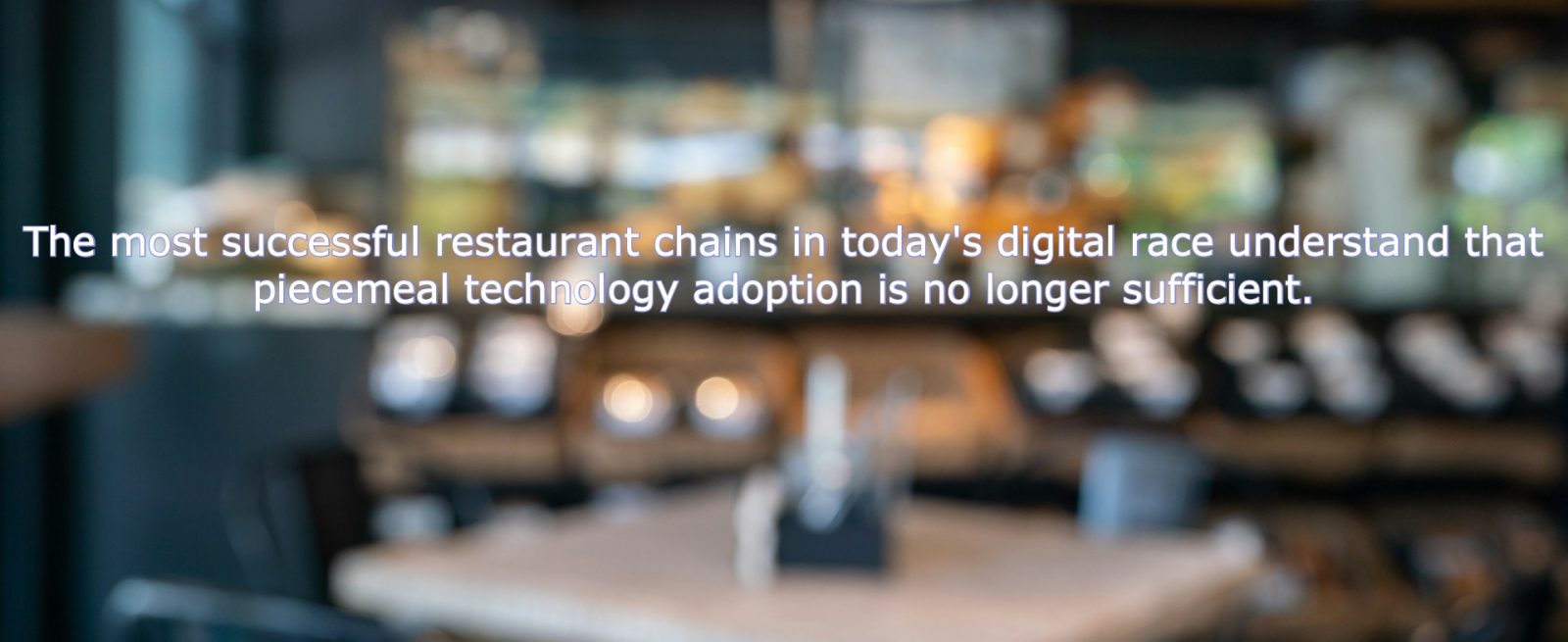Restaurant Giants Declare War on Digital Chaos
4 Min Read By Sharat Potharaju
It’s no secret that restaurants with more than one location depend on standardization to thrive. A customer in Miami should bite into the same perfectly seasoned burger that delights diners in Seattle. Reliable experiences build brand loyalty, and systemic processes lead to reliable profit margins.
As chain restaurants continue to integrate new technologies into their daily operations, store-to-store standardization of these technologies is often an afterthought. One location might offer seamless mobile ordering, while another struggles with glitchy payment systems, creating inconsistencies that can frustrate customers and impact revenue.
The 2024 State of the Restaurant Industry report revealed that 22 percent of restaurant operators plan to invest in technology like POS software, back-of-house systems, and data analytics in the near future. Meanwhile, an additional six percent will invest more in automation like kiosks and robotics. With restaurant tech investments on the rise, the industry is witnessing the emergence of sophisticated enterprise platforms specifically designed for multi-location operations. These solutions deliver real-time data analytics and adaptable frameworks that bridge corporate strategies with local execution.
As the digital dining revolution accelerates, the most successful restaurant chains will be those that transform their fragmented tech landscape into unified enterprise platforms. These standardized systems will delight customers, protect data, and empower corporate and local teams to achieve unprecedented success.
Accelerate Service, Enhance Experiences
According to a 2024 survey, when asked to pick one area where technology would have the most impact on their dining experience, 30 percent of diners answered tech that facilitates payment, and 28% cited tech that makes ordering easier and faster.
Customers crave simplified steps at the beginning and end of their food service experiences, and it’s not hard to understand why. Getting the transactional hurdles out of the way allows diners to relax and relish what matters most — the food and the company they've chosen to share their meal with.
Digital tools that best streamline chain restaurant customers' experiences will focus on speed, convenience, and efficiency when implemented as part of a unified enterprise platform. Dynamic QR codes exemplify this approach, serving as a standardized solution that can instantly connect diners with menus for easier ordering, customer receipts for faster checkout, and loyalty rewards for return visits — all while maintaining consistent experiences across every location through centralized management.
Elevate Operations from Adequate to Excellent
Over a third (38 percent) of operators say their restaurant was not profitable in 2023. Worse, 43% reported that their restaurant is still carrying debt accumulated during the pandemic.
Implementing the right high-impact digital tools is one way that chain restaurants can increase efficiencies, reallocate resources, and save money. Identifying areas where the most time and money are spent will reveal which digital solutions are most needed.
Implementing the right high-impact digital tools is one way that chain restaurants can increase efficiencies, reallocate resources, and save money.
The operational trifecta of inventory management, financial oversight, and labor scheduling represents a major drain on resources for most chain restaurants. By implementing standardized digital solutions across all locations, operators can transform these traditional cost centers into competitive advantages.
For example, smart scheduling platforms balance staffing needs precisely, eliminating costly overscheduling while ensuring peak service periods remain well-covered. Enterprise-wide inventory systems provide real-time visibility across locations, preventing costly stockouts and profit-draining spoilage. Meanwhile, integrated customer relationship management (CRM) tools capture and analyze dining patterns, transforming one-time visitors into repeat customers and brand advocates.
This centralized approach not only empowers local teams with better tools but also provides corporate headquarters with valuable data insights to refine the business model continuously — delivering precisely the unified tech landscape that successful chains need to succeed.
Build Ironclad Security Across Locations
The restaurant industry has become a prime target for cyber attacks as systems like online ordering and digital payment are now the industry standard. And customers aren’t the only ones at risk.
In August 2023, Golden Corral suffered a devastating breach where attackers stole personal information — including Social Security numbers, financial details, and login credentials — from more than 180,000 current and former employees and beneficiaries. This incident highlights the critical vulnerability of chain restaurants operating with inconsistent security protocols across multiple locations.
To strengthen security measures, multi-location restaurants today must prioritize digital tools that protect customer data and prevent fraud. At a minimum, these tools should:
● Encrypt customer payment information
● Block access to sensitive customer information within POS systems
● Assist with third-party risk management
Dynamic QR code solutions offer a powerful security advantage in this landscape. Unlike static codes that remain vulnerable once compromised, enterprise-level dynamic QR platforms enable centralized management with robust encryption, real-time monitoring, and instant deactivation capabilities — allowing restaurant chains to maintain consistent security protocols across all locations while providing customers with the seamless digital interactions they expect.
Digital Transformation in Action
Shifting from location-specific tech to standardized enterprise solutions elevates key restaurant functions across the organization. Unified systems streamline internal operations and customer-facing processes, including:
● Customer ordering: Fragmented interfaces across different POS systems, mobile apps, and kiosks transform into consistent enterprise-wide digital platforms that maintain identical functionality, menu offerings, and loyalty rewards at every location.
● Inventory management: Disjointed store-by-store tracking gives way to real-time enterprise visibility, preventing shortages and overstocking. Corporate teams gain powerful analytics to spot usage trends and optimize purchasing strategies based on data-driven forecasting.
● Payment processing: The patchwork of payment vendors with inconsistent security protocols consolidates into a single secure ecosystem, delivering uniform fraud protection and consistent checkout experiences regardless of location.
● Loyalty programs: Customer data trapped in location silos evolves into a comprehensive CRM system that captures insights across all touchpoints. This centralized approach enables corporate teams to craft personalized, targeted promotions that drive repeat business.
Change can be a good thing. The benefits will speak volumes for multi-location restaurants that take the leap and implement unified digital solutions.
The most successful restaurant chains in today's digital race understand that piecemeal technology adoption is no longer sufficient. Multi-location restaurants have long recognized standardization as the cornerstone of their success in food quality and operational processes. Now, the industry leaders are applying this same winning formula to their technology infrastructure, unifying digital tools to create seamless experiences that will define the future of dining.


